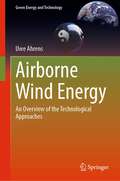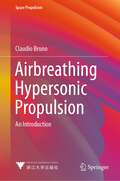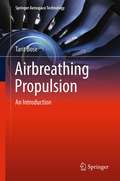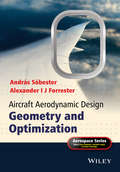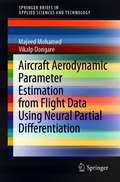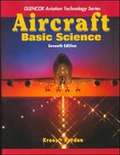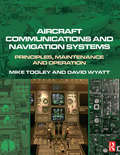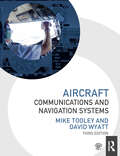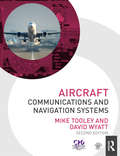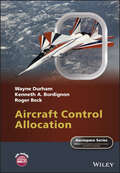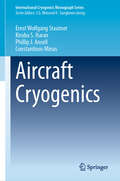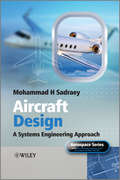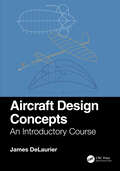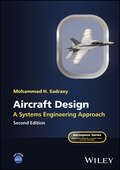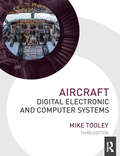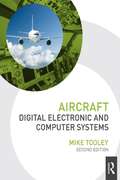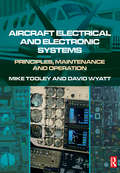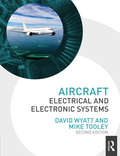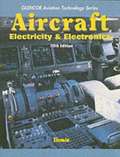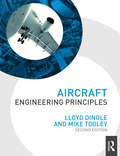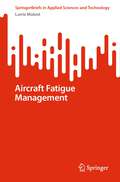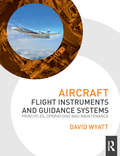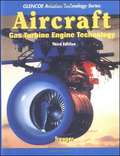- Table View
- List View
Airborne Wind Energy: An Overview of the Technological Approaches (Green Energy and Technology)
by Uwe AhrensThis book shows possible solutions to how a profitable energy supply can be implemented with almost no population resistance. Worldwide, more than 80 % of our energy needs are still covered by fossil fuels. Under these circumstances, can climate change still be stopped? Essential technologies for usage of wind energy with an emphasis on high-altitude wind utilization are presented. Airborne wind energy is one of the most promising technologies to enable a renewable energy turnaround in an economical way. The main problem of conventional renewable energy is the insufficient availability. To ensure a 100 % supply of renewable energy, enormous and very expensive storage capacities would have to be built up. How we can cover our entire energy needs (electricity, mobility and heat) in the future without fossil fuels, without risking the competitiveness of our economy, is shown in this book.
Airbreathing Hypersonic Propulsion: An Introduction (Space Propulsion)
by Claudio BrunoThis book details science of hypersonics especially focusing on propulsion aspects such as supersonic combustion ramjets and their applications, and also includes lift and drag in hypersonic flight and their mathematical and physical explanation. It provides charts and data from hypersonic testing and measurements from actual vehicles and engines built in the past. Criteria to dimension hypersonic powered and unpowered vehicles (gliders) based on fundamental fluid dynamics and backed by flight testing; criteria to preliminary sizing vehicles and preliminary dimensioning of supersonic combustors are introduced. The book will serve better theoretical understanding of drag, lift and how to apply them to the design of hypersonic vehicles, as well as data to size vehicles and supersonic combustion ramjet (SCRJ) systems. This book will be a useful reference for researchers and designers in hypersonic vehicles but also second or third-year graduate students.
Airbreathing Propulsion: An Introduction (Springer Aerospace Technology)
by Tarit BoseAirbreathing Propulsion covers the physics of combustion, fluid and thermo-dynamics, and structural mechanics of airbreathing engines, including piston, turboprop, turbojet, turbofan, and ramjet engines. End-of-chapter exercises allow the reader to practice the fundamental concepts behind airbreathing propulsion, and the included PAGIC computer code will help the reader to examine the relationships between the performance parameters of different engines. Large amounts of data have on many different piston, turbojet, and turboprop engines have been compiled for this book and are included as an appendix. This textbook is ideal for senior undergraduate and graduate students studying aeronautical engineering, aerospace engineering, and mechanical engineering.
Aircraft Aerodynamic Design
by Andr?s S?bester Alexander I ForresterOptimal aircraft design is impossible without a parametric representation of the geometry of the airframe. We need a mathematical model equipped with a set of controls, or design variables, which generates different candidate airframe shapes in response to changes in the values of these variables. This model's objectives are to be flexible and concise, and capable of yielding a wide range of shapes with a minimum number of design variables. Moreover, the process of converting these variables into aircraft geometries must be robust. Alas, flexibility, conciseness and robustness can seldom be achieved simultaneously.Aircraft Aerodynamic Design: Geometry and Optimization addresses this problem by navigating the subtle trade-offs between the competing objectives of geometry parameterization. It beginswith the fundamentals of geometry-centred aircraft design, followed by a review of the building blocks of computational geometries, the curve and surface formulations at the heart of aircraft geometry. The authors then cover a range of legacy formulations in the build-up towards a discussion of the most flexible shape models used in aerodynamic design (with a focus on lift generating surfaces). The book takes a practical approach and includes MATLAB®, Python and Rhinoceros® code, as well as 'real-life' example case studies.Key features: Covers effective geometry parameterization within the context of design optimizationDemonstrates how geometry parameterization is an important element of modern aircraft designIncludes code and case studies which enable the reader to apply each theoretical concept either as an aid to understanding or as a building block of their own geometry modelAccompanied by a website hosting codesAircraft Aerodynamic Design: Geometry and Optimization is a practical guide for researchers and practitioners in the aerospace industry, and a reference for graduate and undergraduate students in aircraft design and multidisciplinary design optimization.
Aircraft Aerodynamic Design with Computational Software
by Arthur Rizzi Jesper OppelstrupThis modern text presents aerodynamic design of aircraft with realistic applications, using CFD software and guidance on its use. Tutorials, exercises, and mini-projects provided involve design of real aircraft, ranging from straight to swept to slender wings, from low speed to supersonic. Supported by online resources and supplements, this toolkit covers topics such as shape optimization to minimize drag and collaborative designing. Prepares seniors and first-year graduate students for design and analysis tasks in aerospace companies. In addition, it is a valuable resource for practicing engineers, aircraft designers, and entrepreneurial consultants.
Aircraft Aerodynamic Design: Geometry and Optimization (Aerospace Series)
by Alexander I Forrester András SóbesterOptimal aircraft design is impossible without a parametric representation of the geometry of the airframe. We need a mathematical model equipped with a set of controls, or design variables, which generates different candidate airframe shapes in response to changes in the values of these variables. This model's objectives are to be flexible and concise, and capable of yielding a wide range of shapes with a minimum number of design variables. Moreover, the process of converting these variables into aircraft geometries must be robust. Alas, flexibility, conciseness and robustness can seldom be achieved simultaneously. Aircraft Aerodynamic Design: Geometry and Optimization addresses this problem by navigating the subtle trade-offs between the competing objectives of geometry parameterization. It beginswith the fundamentals of geometry-centred aircraft design, followed by a review of the building blocks of computational geometries, the curve and surface formulations at the heart of aircraft geometry. The authors then cover a range of legacy formulations in the build-up towards a discussion of the most flexible shape models used in aerodynamic design (with a focus on lift generating surfaces). The book takes a practical approach and includes MATLAB®, Python and Rhinoceros® code, as well as ‘real-life’ example case studies. Key features: Covers effective geometry parameterization within the context of design optimization Demonstrates how geometry parameterization is an important element of modern aircraft design Includes code and case studies which enable the reader to apply each theoretical concept either as an aid to understanding or as a building block of their own geometry model Accompanied by a website hosting codes Aircraft Aerodynamic Design: Geometry and Optimization is a practical guide for researchers and practitioners in the aerospace industry, and a reference for graduate and undergraduate students in aircraft design and multidisciplinary design optimization.
Aircraft Aerodynamic Parameter Estimation from Flight Data Using Neural Partial Differentiation (SpringerBriefs in Applied Sciences and Technology)
by Majeed Mohamed Vikalp DongareThis book presents neural partial differentiation as an estimation algorithm for extracting aerodynamic derivatives from flight data. It discusses neural modeling of the aircraft system. The neural partial differentiation approach discussed in the book helps estimate parameters with their statistical information from the noisy data. Moreover, this method avoids the need for prior information about the aircraft model parameters. The objective of the book is to extend the use of the neural partial differentiation method to the multi-input multi-output aircraft system for the online estimation of aircraft parameters from an established neural model. This approach will be relevant for the design of an adaptive flight control system. The book also discusses the estimation of aerodynamic derivatives of rigid and flexible aircraft which are treated separately. The longitudinal and lateral-directional derivatives of aircraft are estimated from flight data. Besides the aerodynamic derivatives, mode shape parameters of flexible aircraft are also identified in the book as part of identification for the state space aircraft model. Since the detailed description of the approach is illustrated through the block diagram and their results are presented in tabular form with figures of parameters converge to their estimates, the contents of this book are intended for readers who want to pursue a postgraduate and doctoral degree in science and engineering. This book is useful for practicing scientists, engineers, and teachers in the field of aerospace engineering.
Aircraft Basic Science (7th Edition)
by Michael J. Kroes James R. RardonThe material in this text is designed primarily as a resource for students of aviation technology who are preparing for FAA aircraft and powerplant maintenance certification. The text begins with a review of practical mathematics and a general presentation of the underlying principles of physics. The extensively revised chapter on aerodynamics provides students with a conceptual understanding of the mathematics and physics of flight. Chapters are well illustrated and present specific aspects of aircraft materials, fabrication processes, maintenance tools and techniques, and federal aviation regulations. This updated edition is consistent with FAA regulations and procedures.
Aircraft Communications and Navigation Systems
by David Wyatt Mike TooleyButterworth-Heinemann’s Aircraft Engineering Principles and Practice Series provides students, apprentices and practicing aerospace professionals with the definitive resources to advance their aircraft engineering maintenance studies and career. This book provides an introduction to the principles of communications and navigation systems. It is written for anyone pursuing a career in aircraft maintenance engineering or a related aerospace engineering discipline, and in particular will be suitable for those studying for licensed aircraft maintenance engineer status. The book systematically addresses the relevant sections (ATA chapters 23/34) of modules 11 and 13 of part-66 of the EASA syllabus. It is ideal for anyone studying as part of an EASA and FAR-147 approved course in aerospace engineering.
Aircraft Communications and Navigation Systems
by David Wyatt Mike TooleyIntroducing the principles of communications and navigation systems, this book is written for anyone pursuing a career in aircraft maintenance engineering or a related aerospace engineering discipline, and in particular will be suitable for those studying for licensed aircraft maintenance engineer status. It systematically addresses the relevant sections (Air Transport Association of America chapters 23/34) of modules 11 and 13 of part-66 of the European Aviation Safety Agency (EASA) syllabus and is ideal for anyone studying as part of an EASA and FAR-147-approved course in aerospace engineering. Delivers the essential principles and knowledge base required by Airframe and Propulsion (A&P) Mechanics for Modules 11 and 13 of the EASA Part-66 syllabus and BTEC National awards in aerospace engineering Supports mechanics, technicians and engineers studying for a Part-66 qualification Comprehensive and accessible, with self-test questions, exercises and multiple choice questions to enhance learning for both independent and tutor-assisted study Additional resources and interactive materials are available at the book's companion website at www.66web.co.uk This new and updated third edition provides readers with an overview of the latest key technologies that underpin the functioning of safety-critical systems such as those used in flight management, reporting, navigation, and air traffic control.
Aircraft Communications and Navigation Systems, 2nd ed: Principles, Maintenance And Operation
by David Wyatt Mike TooleyIntroducing the principles of communications and navigation systems, this book is written for anyone pursuing a career in aircraft maintenance engineering or a related aerospace engineering discipline, and in particular will be suitable for those studying for licensed aircraft maintenance engineer status. It systematically addresses the relevant sections (Air Transport Association of America chapters 23/34) of modules 11 and 13 of part-66 of the European Aviation Safety Agency (EASA) syllabus and is ideal for anyone studying as part of an EASA and FAR-147-approved course in aerospace engineering. Delivers the essential principles and knowledge base required by Airframe and Propulsion (A&P) Mechanics for Modules 11 and 13 of the EASA Part-66 syllabus and BTEC National awards in aerospace engineering Supports mechanics, technicians and engineers studying for a Part-66 qualification Comprehensive and accessible, with self-test questions, exercises and multiple choice questions to enhance learning for both independent and tutor-assisted study Additional resources and interactive materials are available at the book's companion website at www.66web.co.uk
Aircraft Control Allocation (Aerospace Series)
by Wayne Durham Roger Beck Kenneth A. BordignonAircraft Control Allocation Wayne Durham, Virginia Polytechnic Institute and State University, USA Kenneth A. Bordignon, Embry-Riddle Aeronautical University, USA Roger Beck, Dynamic Concepts, Inc., USA An authoritative work on aircraft control allocation by its pioneers Aircraft Control Allocation addresses the problem of allocating supposed redundant flight controls. It provides introductory material on flight dynamics and control to provide the context, and then describes in detail the geometry of the problem. The book includes a large section on solution methods, including 'Banks' method', a previously unpublished procedure. Generalized inverses are also discussed at length. There is an introductory section on linear programming solutions, as well as an extensive and comprehensive appendix dedicated to linear programming formulations and solutions. Discrete-time, or frame-wise allocation, is presented, including rate-limiting, nonlinear data, and preferred solutions. Key features: Written by pioneers in the field of control allocation. Comprehensive explanation and discussion of the major control allocation solution methods. Extensive treatment of linear programming solutions to control allocation. A companion web site contains the code of a MATLAB/Simulink flight simulation with modules that incorporate all of the major solution methods. Includes examples based on actual aircraft. The book is a vital reference for researchers and practitioners working in aircraft control, as well as graduate students in aerospace engineering.
Aircraft Cryogenics (International Cryogenics Monograph Series)
by Ernst Wolfgang Stautner Kiruba S. Haran Phillip J. Ansell Constantinos MinasThis book gives a step-by-step approach to the design of a cryogenic infrastructure required for superconducting, all-electric aircraft systems which is also partially applicable to liquid hydrogen fueled subsonic and hypersonic aircraft, as well as hybrids. While there is no shortage of publications on hydrogen fueled aircraft, this book puts the past journal literature through a magnifying glass and condenses it into an engineering strategy for the next steps to enable liquid hydrogen storage and distribution in aircraft. Emphasis is placed on tank design, manufacturability, safety features, and minimum tank weight, providing a holistic focus on the logistics of hydrogen management for all major components within the aircraft as well as on future superconducting motor architecture. The intention is to fully exploit the benefits of a liquid hydrogen reservoir without any need for additional cryogenic fluids, with relevance to cooling of various superconducting components e.g., motors and superconducting cables, as well as the heat sinking of power electronics and for fueling the fuel cell stack system. A liquid hydrogen tank hold-time analysis reveals the main governing factors and describes the required efforts for minimizing onboard boil off for aircraft designs with different flight mission duration. This is followed by an outlook showing where cryotankage technology and cryogenic aircraft architecture may move within the next 20 years embedded in a green hydrogen-based economy and how basic research will need to play a major role to help us realizing these future designs by consequently eliminating whitespace within today's technology landscape. This book is also an aircraft engineering resource on composites, hydrogen properties, general aircraft materials and safety.
Aircraft Design
by Mohammad H. SadraeyA comprehensive approach to the air vehicle design process using the principles of systems engineeringDue to the high cost and the risks associated with development, complex aircraft systems have become a prime candidate for the adoption of systems engineering methodologies. This book presents the entire process of aircraft design based on a systems engineering approach from conceptual design phase, through to preliminary design phase and to detail design phase.Presenting in one volume the methodologies behind aircraft design, this book covers the components and the issues affected by design procedures. The basic topics that are essential to the process, such as aerodynamics, flight stability and control, aero-structure, and aircraft performance are reviewed in various chapters where required. Based on these fundamentals and design requirements, the author explains the design process in a holistic manner to emphasise the integration of the individual components into the overall design. Throughout the book the various design options are considered and weighed against each other, to give readers a practical understanding of the process overall. Readers with knowledge of the fundamental concepts of aerodynamics, propulsion, aero-structure, and flight dynamics will find this book ideal to progress towards the next stage in their understanding of the topic. Furthermore, the broad variety of design techniques covered ensures that readers have the freedom and flexibility to satisfy the design requirements when approaching real-world projects.Key features:* Provides full coverage of the design aspects of an air vehicle including: aeronautical concepts, design techniques and design flowcharts* Features end of chapter problems to reinforce the learning process as well as fully solved design examples at component level* Includes fundamental explanations for aeronautical engineering students and practicing engineers* Features a solutions manual to sample questions on the book's companion websiteCompanion website - www.wiley.com/go/sadraey
Aircraft Design Concepts: An Introductory Course
by James DeLaurierAircraft Design Concepts: An Introductory Course introduces the principles of aircraft design through a quantitative approach developed from the author’s extensive experience in teaching aircraft design. Building on prerequisite courses, the text develops basic design skills and methodologies, while also explaining the underlying physics. The book uses a historical approach to examine a wide range of aircraft types and their design. Numerous charts, photos, and illustrations are provided for in-depth view of aeronautical engineering. It addresses conventional tail-aft monoplanes, "flying-wing", biplane, and canard configurations. Providing detailed analysis of propeller performance, the book starts with simple blade-element theory and builds to the Weick method. Written for senior undergraduate and graduate students taking a single-semester course on Aircraft Design or Aircraft Performance, the book imparts both the technical knowledge and creativity needed for aircraft design.
Aircraft Design: A Systems Engineering Approach (Aerospace Series)
by Mohammad H. SadraeyLearn the aircraft design process from a systems-engineering perspective, designed for both aspiring and practicing aerospace engineers Aircraft design incorporates a range of technological areas, including aerodynamics, flight dynamics, propulsion, and structure. Aircraft engineering design therefore requires techniques from systems engineering to integrate the requirements from these disparate areas into a coherent whole. There has never been a greater need for successful aerospace engineers to have a grasp of systems engineering and its applications in the field. Aircraft Design: A Systems Engineering Approach meets this need with a volume which takes the reader from conceptual design to detail design. Offering a systems engineering approach that weighs the needs of different aircraft components holistically, it provides readers with a practical look into the process of aircraft design. Now fully updated to reflect the latest industry developments, it promises to continue as an indispensable tool for modern students in the field. Readers of the second edition of Aircraft Design will also find: Brand new material on structural design, spoiler design, winglets, aircraft modification and modernization, and more Detailed discussion of emerging topics including all-electric aircraft design, VTOL aircraft design, and many others Guidance on the latest FAA requirements with a design impact Aircraft Design is ideal for senior undergraduate and graduate students interested in aircraft design, advanced aircraft design, and air vehicle design. The book may also be of interest to mechanical, industrial, and systems engineers working in the aerospace sector.
Aircraft Digital Electronic and Computer Systems
by Mike TooleyAircraft Digital Electronic and Computer Systems is a thorough introduction to the principles and practice of aircraft digital electronic, avionic and computer systems. New to this third edition, integrated modular avionics (IMA) provides an overview of networked avionics found in the latest generation of transport aircraft. Cabin systems covers cabin networks, intercommunication, and core systems. Aircraft information systems examines flight deck operation aided by electronic flight bags (EFB) and includes a case study that highlights the importance of information systems, as well as the potential consequences of their failure. The new edition contains several hundred test questions, and its companion website, www.66web.co.uk, offers additional resource material. With full coverage of Module 5 and avionics topics in Modules 11 and 13, this book is ideal for those studying towards licensed aircraft maintenance engineer status, both independently and part of an EASA Part-66 or FAR-147 approved course. It will also appeal to those taking City & Guilds, EDEXCEL National or Higher National Units or a First/Foundation Degree in an aerospace related discipline.
Aircraft Digital Electronic and Computer Systems, 2nd ed
by Mike TooleyAn introduction to the principles of aircraft digital and electronic systems, this book is written for anyone pursuing a career in aircraft maintenance engineering or a related aerospace engineering discipline. Suitable for those studying towards licensed aircraft maintenance engineer status as part of an EASA Part-66 or FAR-147 approved course, or those taking Aerospace Engineering City & Guilds modules, EDEXCEL National Units, EDEXCEL Higher National Units or a Degree in aircraft engineering.
Aircraft Electrical and Electronic Systems
by David Wyatt Mike TooleyThe Aircraft Engineering Principles and Practice Series provides students, apprentices and practicing aerospace professionals with the definitive resources to take forward their aircraft engineering maintenance studies and career. This book provides a detailed introduction to the principles of aircraft electrical and electronic systems. It delivers the essential principles and knowledge required by certifying mechanics, technicians and engineers engaged in engineering maintenance on commercial aircraft and in general aviation. It is well suited for anyone pursuing a career in aircraft maintenance engineering or a related aerospace engineering discipline, and in particular those studying for licensed aircraft maintenance engineer status. The book systematically covers the avionic content of EASA Part-66 modules 11 and 13 syllabus, and is ideal for anyone studying as part of an EASA and FAR-147 approved course in aerospace engineering.All the necessary mathematical, electrical and electronic principles are explained clearly and in-depth, meeting the requirements of EASA Part-66 modules, City and Guilds Aerospace Engineering modules, BTEC National Units, elements of BTEC Higher National Units, and a Foundation Degree in aircraft maintenance engineering or a related discipline.
Aircraft Electrical and Electronic Systems, 2nd ed: Principles, Operation And Maintenance
by David Wyatt Mike TooleyIntroducing the principles of aircraft electrical and electronic systems, this book is written for anyone pursuing a career in aircraft maintenance engineering or a related aerospace engineering discipline, and in particular will be suitable for those studying for licensed aircraft maintenance engineer status. It systematically addresses the relevant sections of modules 11 and 13 of part-66 of the EASA syllabus, and is ideal for anyone studying as part of an EASA and FAR-147 approved course in aerospace engineering. Delivers the essential principles and knowledge base required by Airframe and Propulsion (A&P) Mechanics for Modules 11 and 13 of the EASA Part-66 syllabus and BTEC National awards in aerospace engineering Supports Mechanics, Technicians and Engineers studying for a Part-66 qualification Comprehensive and accessible, with self-test questions, exercises and multiple choice questions to enhance learning for both independent and tutor-assisted study This second edition has been updated to incorporate: complex notation for the analysis of alternating current (AC) circuits; an introduction to the "all electric aircraft" utilising new battery technologies; updated sensor technology using integrated solid-state technology micro-electrical-mechanical sensors (MEMS); an expanded section on helicopter/rotary wing health usage monitoring systems (HUMS).
Aircraft Electricity and Electronics (5th Edition)
by Thomas K. EisminOne of five texts in Glencoe's Aviation Technology Series, (formerly the Northrop series), Aircraft Electricity and Electronics provides your students with the information they need to perform return-to-service-quality maintenance and repair of aircraft electrical systems. The material covered includes the details necessary for the Federal Aviation Administration certification of Airframe and Powerplants Technicians. The text expands well beyond this basic information, however, providing as in-depth study of both ac and dc systems for virtually all varieties of aircraft. The text takes students through the fundamentals of electron theory and on to the study of aircraft digital control systems. Integrated into the text are various examples of troubleshooting techniques as they apply to aircraft systems. The text also provides details on a variety of general and commercial aircraft electrical/electronic systems, including avionic systems. One of the major changes in this edition is the modernization of material about electrical and electronic equipment to reflect current practices. Coverage of transistors and semiconductors, lighting systems, and nickel cadmium batteries has been updated while troubleshooting techniques using digital and analog meters have been added. This edition includes a Student Study Guide that parallels the text. It provides fill-in-the-blank questions that identify key term, demonstrates applications of mathematical relationships, and validates learning progress by offering multiple-choice questions.
Aircraft Engineering Principles, 2nd ed
by Lloyd Dingle Michael H TooleyAircraft Engineering Principles is the essential text for anyone studying for licensed A&P or Aircraft Maintenance Engineer status. The book is written to meet the requirements of JAR-66/ECAR-66, the Joint Aviation Requirement (to be replaced by European Civil Aviation Regulation) for all aircraft engineers within Europe, which is also being continuously harmonised with Federal Aviation Administration requirements in the USA.The book covers modules 1, 2, 3, 4 and 8 of JAR-66/ECAR-66 in full and to a depth appropriate for Aircraft Maintenance Certifying Technicians, and will also be a valuable reference for those taking ab initio programmes in JAR-147/ECAR-147 and FAR-147. In addition, the necessary mathematics, aerodynamics and electrical principles have been included to meet the requirements of introductory Aerospace Engineering courses. Numerous written and multiple choice questions are provided at the end of each chapter, to aid learning.
Aircraft Fatigue Management (SpringerBriefs in Applied Sciences and Technology)
by Lorrie MolentFatigue occurs under cyclic loading and can significantly degrade the operational capability and safety of metallic aircraft components and structures. This book provides summaries of some metallic aircraft structural integrity issues, innovative but established examples of maintaining operational capability—airworthiness, and assessments of safe in-service fatigue lives. These topics are based on a through-life fatigue management philosophy that ensures safe and continued operation, including during life extensions that are almost inevitably required. This philosophy is underpinned by observations of the behaviour of fatigue cracks in actual structures subjected to realistic service loading conditions. The book includes topics like aircraft design requirements, individual aircraft fatigue loads monitoring, airframe fatigue testing, sources of fatigue-nucleating discontinuities, and prediction of fatigue crack growth from these discontinuities. All these aspects contribute to discussing methods of assuring the structural integrity and operational capability of realistically cracked structures. The book also discusses the exponential behaviour of lead or dominant cracks—those leading to first failure—and the practical significance of differences between fatigue fracture topographies produced under constant amplitude and variable amplitude loading. The book can be a valuable reference for researchers and professionals interested in aircraft fatigue management and allied fields.
Aircraft Flight Instruments and Guidance Systems: Principles, Operations and Maintenance
by David WyattWritten for those pursuing a career in aircraft engineering or a related aerospace engineering discipline, Aircraft Flight Instruments and Guidance Systems covers the state-of-the-art avionic equipment, sensors, processors and displays for commercial air transport and general aviation aircraft. As part of a Routledge series of textbooks for aircraft-engineering students and those taking EASA Part-66 exams, it is suitable for both independent and tutor-assisted study and includes self-test questions, exercises and multiple-choice questions to enhance learning. The content of this book is mapped across from the flight instruments and automatic flight (ATA chapters 31, 22) content of EASA Part 66 modules 11, 12 and 13 (fixed/rotary-wing aerodynamics, and systems) and Edexcel BTEC nationals (avionic systems, aircraft instruments and indicating systems). David Wyatt CEng MRAeS has over 40 years’ experience in the aerospace industry and is currently Head of Airworthiness at Gama Engineering. His experience in the industry includes avionic development engineering, product support engineering and FE lecturing. David also has experieince in writing for BTEC National specifications and is the co-author of Aircraft Communications & Navigation Systems, Aircraft Electrical & Electronic Systems and Aircraft Digital Electronic and Computer Systems.
Aircraft Gas Turbine Engine Technology (3rd Edition)
by Irwin E. TreagerAircraft Gas Turbine Engine Technology provides a comprehensive, easy-to-understand treatment of the background, development, and applications of the gas turbine engine it its various forms, such as turobjet, turbofan, turboprop, and turboshaft powerplants. Designed primarily as a resource for technicians preparing for the FAA aircraft powerplant mechanic certification, Aircraft Gas Turbine Engine Technology also may be used a reference. The text also discusses the changing maintenance and overhaul procedures and philosophies and the role of fuel metering in engine operation.
